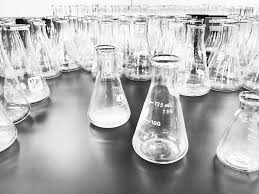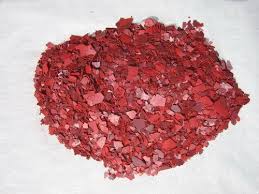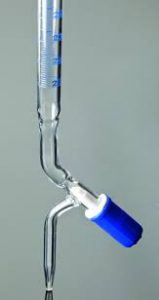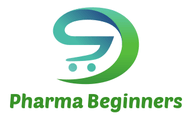Cleaning of laboratory glassware is the key for success of an analysis in the Pharmaceutical Quality Control Laboratory. Even the maximum cautiously performed laboratory analysis can produced erroneous/wrong results if uncleaned glassware is being used during the analysis.
If the glassware that is used for measuring solvent / sample solution or standard solutions is contaminated with previously analysed product residue or cleaning agent (soap solution) etc. or any other material, It can carryovers in the present solution, samples or standard solution. This will affect the accuracy of analytical results, can contaminate the sample and result may outside the specification means shows the extraneous peak in HPLC analysis etc.
Cleaning of Laboratory Glassware – Procedure

Keeping the laboratory glassware physically neat and clean, free of other product, solvent, residue of soap solution or cleaning reagent, and bacteria is therefore of the utmost importance.
Laboratory should have glassware cleaning validated procedure on the basis of worst case approach. And involve person should have sufficient trained to do the job of cleaning and well aware with the procedure.
To keep your glass Glassware neat and clean, you must wash it immediately after use. Put glassware in water if you cannot clean it immediately otherwise the residue will stick to the Glassware and it would get difficult to remove it.
For Cleaning of glassware in Quality Control Laboratory:
make use of soap solution as defined in the cleaning procedure of glassware (Concentration of soap solution should be as per validated procedure), detergent, or cleaning powder. Try to use soap and cleaning powder without any abrasives as it can scratch the glass. However, for glassware that is too dirty, you can make use of cleaning powder with mild abrasive action to get good cleaning results.
Chromic acid solution is effective in cleaning unduly clouded or dirty glassware. For scrubbing the glassware thoroughly, you must use a brush.
Preparation of Chromic acid (H2CrO4):


Chromic acid is toxic, it is not recommend to make large batches of it that have to be stored for extended periods of time.
The amount of reagents (chemicals involved in the reactions) can be altered need based of the analyst. Before working with any reagent, Use appropriate safety equipment, such as chemical resistant goggles, gloves and lab coat. The room where the reagents are being prepared should also be ventilated and preferably done in a fume hood.
Step by Step Preparation of Chromic Acid for Cleaning of Glassware in Quality Control Laboratory :
Take 1000 ml volumetric flask or beaker and place carefully the 20 gram of sodium dichromate (Na2 Cr2 O7) or potassium dichromate (K2 Cr2 O7) in the volumetric flask or beaker. Add the water slowly about 100 ml by using small beaker or graduated pipette through the wall of flask or beaker, stir the same gently with glass rod till it covers into a paste form. Add more 400 ml water in same manner with continuous stirring with glass rod. While continuously stirring, carefully pour 300 milliliters of concentrated sulfuric acid (H2 SO4 (aq)) to the graduated cylinder or beaker and make up the volume up to 1000 ml with water.
Also visit :
Finally, pour the Chromic acid into a glass storage container with a stopper. Be sure to put a label on the glass storage container indicating it contains concentrated chromic acid and the date it was made. After the chromic acid has served its purpose or it has been in storage for a specific amount of time, it can be disposed of. Let’s discuss how to safely dispose of chromic acid.
Instructions for Glassware Cleaning in Quality Control Laboratory with Cromic Acid :
After cleaning, rinse the glassware with tap water. Allow the water to run into and over the glassware and then fill each piece with water. Fill test tubes, flasks, and other glassware with water and shake and empty them. Do this for at least 5-6 times to clean the glassware properly. For cleaning contaminated glassware, you will have to sterilize them too.
Washed Glassware must either be placed in a basket with their mouth downwards for allowing them to dry completely or they should be made to dry in an oven. You can also hang test tubes, flasks, and other Glassware on wooden pegs for drying them out. Stand dry cylinders, burettes, and pipettes on a towel for drying them properly.
Place clean glassware in a cabinet to protect it from dust. You can also make use of cotton, or cork, or can tape a piece of paper on the mouth of the glassware to prevent dirt and dust from entering the glassware. Keep washed, cleaned, and sterilised glassware pieces in special racks and at a distance to avoid any breakage.
With proper care and maintenance you can not only increase the life of your Glassware, but can also enhance your lab safety.
Also visit : Good Laboratory Practices for Workbench
Quality Control Laboratory Glassware Cleaning Procedure :
-
General:
- Wear Personal Protective Equipment’s (PPE’s) such as mask, goggles and hand gloves while cleaning of glassware.
- Take the used glassware from the designated place and decant the liquid into the basin under running tap water (potable water) and solid waste into dedicated waste bin.
- Dispose solvents, acids and solids in their respective container.
- Rinse the glassware thoroughly with tap water (potable water) to remove any adhering solid from the surface, use nylon brush of suitable size if required.
- Decant the tap water into wash basin by keeping glassware vertically downwards.
- Soak new glassware for 4 to 5 hours in 1% HCl (take about 5 ml conc. hydrochloric acid in 500 ml volumetric flask containing about 200 ml potable water and dilute to the mark with potable water) or 1% v/v HNO3 ( take about 5 ml nitric acid in 500 ml volumetric flask containing about 200 ml potable water and dilute to the mark with potable water) before washing.
-
Preparation of Soap solution (Detergent solution preparation): Example : TEEPOL
- Take 10 liter of potable water in a tray and add 0.5 liter of teepol. Make homogeneous solution by stirring.
- Every day morning discard the detergent solution of previous day and prepare new soap solution for use.
-
Cleaning:
- Dip the glassware into the container filled with detergent solution. In case where glass apparatus have a large size, add small quantity of the detergent solution and shake the glassware.
- Rinse the glassware thoroughly with running tap water (potable water) by using nylon brush. In case of sticky material dip the glassware in detergent solution for half an hour then scrub it with nylon brush.
-
Burette:

Flush the burette with jet of running tap water (potable water) to remove cleaning agent completely.
-
Pipette:
 Soak the pipette into the soap solution, rinse with potable water, followed by flushing with jet of running tap water (potable water), then rinse with purified water.
Soak the pipette into the soap solution, rinse with potable water, followed by flushing with jet of running tap water (potable water), then rinse with purified water.
-
Vials:

-
- Open and empty out the used vials one by one, wash the vials with plenty of water.
- Dip all the vials in soap solution in a beaker or tray.
- Rinse all the vials one by one in running water until soap free.
- Rinse the vials with purified water and then transfer these vials in beaker containing methanol/acetonitrile.
- Sonicate the vials with septa for 15 minutes and finally rinse with purified water.
- Keep these vials in another clean tray and place the tray in a drying oven at about 50ºC.
- After 2-3 hours take out the tray with dried vials from drying oven and place these vials at its designated place.
-
In case of greasy material or insoluble in water,
- wash it by rinsing 3 to 4 times with solvent in which the material is soluble
- and then follow above procedure.
- Repeat procedure till it is visually clean.
- Rinse the glassware thoroughly with running tap water (potable water)by using nylon brush.
- Rinse the glassware thoroughly with distilled water if possible after cleaning,
- keep the glassware into a suitable clean tray for drying.
- Dry the washed glassware into a hot oven at 50°C – 60°C till complete drying.
- After drying remove the dry glassware and keep at respective place.
- When traces of residues are observed then
- soak the glassware in hot Teepol solution for 15 minutes then wash with water and dry in oven..
For the basics of Laboratory Cleaning click here



Pingback: SOP for Handling of Laboratory Reagents - Pharma Beginners